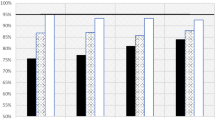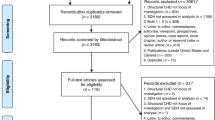Abstract
Objective
Assess the quality of critical congenital heart disease (CCHD) screening data reports in California, where CCHD screening is not mandatory but reporting is.
Study design
Retrospective review of California hospital-level CCHD screening data to evaluate data reliability and adherence to state screening and reporting recommendations. Data were evaluated for internal consistency and compared to two databases.
Results
Over one-third of hospitals did not submit data. Only 70.7% of the Vital Records live births were reported in CCHD screening data. Only 46% of reporting hospitals submitted data with matching numbers of completed screens and results, and 22% matched their respective live births in a second database.
Conclusion
CCHD data reporting in California is incomplete, which may miss 359 CCHD cases/year from non-reporting. Data inconsistencies may miss additional cases. Mandatory screening, reporting, and improvements in data reliability are urgently needed to inform screening modifications and enhance timely detection and disease surveillance.
This is a preview of subscription content, access via your institution
Access options
Subscribe to this journal
Receive 12 print issues and online access
$259.00 per year
only $21.58 per issue
Buy this article
- Purchase on Springer Link
- Instant access to full article PDF
Prices may be subject to local taxes which are calculated during checkout


Similar content being viewed by others
References
Watson MS, Mann MY, Lloyd-Puryear MA, Rinaldo P, Howell RR. Newborn screening: toward a uniform screening panel and system - executive summary. Pediatrics. 2006;117:S296–S307.
Advisory Committee on Heritable Disorders in Newborns and Children Recommended Uniform Screening Panel. https://www.hrsa.gov/advisory-committees/heritable-disorders/rusp/index.html. Accessed 15 May 2020.
Sontag MK, Miller JI, McKasson S, Sheller R, Edelman S, Yusuf C, et al. Newborn screening timeliness quality improvement initiative: impact of national recommendations and data repository. PLoS ONE. 2020;15:1–17.
Chang R, Gurvitz M, Rodriguez S. Missed diagnosis of critical congenital heart disease. Arch Pediatr Adolesc Med. 2008;162:969.
Wren C, Reinhardt Z, Khawaja K. Twenty-year trends in diagnosis of life-threatening neonatal cardiovascular malformations. Arch Dis Child Fetal Neonatal Ed. 2008;93:F33–F35.
White KR, Forsman I, Eichwald J, Munoz K. The evolution of early hearing detection and intervention programs in the United States. Semin Perinatol. 2010;34:170–9.
Sebelius K. Secretary of Health & Human Services letter to the Secretary’s Advisory Committee on Heritable Disorders in New borns and Children (SACHDNC); September 21, 2011. Available at https://www.hrsa.gov/sites/default/files/hrsa/advisory-committees/heritabledisorders/reports-recommendations/response-congenital-cyanotic.pdf. Accessed 1 April 2019.
Glidewell J, et al. Actions in support of newborn screening for critical congenital heart disease - United States, 2011-2018. Morb Mortal Wkly Rep. 2019;68:107–11.
Abouk R, Grosse S, Ailes E, Oster M. Association of US state implementation of newborn screening policies for critical congenital heart disease with early infant cardiac deaths. JAMA. 2017;318:2111–8.
Hamilton BE, Martin JA, Osterman MHS, Curtin SC, Matthews TJ. National Vital statistics reports births: final data for 2014. Statistics 2015;64:1–104.
Guidelines for critical congential heart disease screening services; State of California-Health and Human Services Agency Department of Health Care Services; March 11, 2014. Letter 04-0314. Available at https://www.dhcs.ca.gov/services/ccs/Documents/ccsnl040314.pdf. Accessed 1 April 2019.
Assembly Bill 1731 Newborn Screening Program: Critical Congenital Heart Disease. September 15, 2012. Available at http://www.leginfo.ca.gov/pub/11-12/bill/asm/ab_1701-1750/ab_1731_bill_20120915_chaptered.pdf. Accessed 1 April 2019.
Kemper AR, et al. Strategies for implementing screening for critical congenital heart disease. Pediatrics. 2011;128:e1259–67.
Purkey NJ, et al. Birth location of infants with critical congenital heart disease in California. Pediatr Cardiol. 2018;310–8. https://doi.org/10.1007/s00246-018-2019-0.
Peterson JK, Catton KG, Setty SP. Healthcare disparities in outcomes of a metropolitan congenital heart surgery center: the effect of clinical and socioeconomic factors. J Racial Ethn Heal Disparities. 2018;5:410–21.
Oster ME, et al. A population-based study of the association of prenatal diagnosis with survival rate for infants with congenital heart defects. Am J Cardiol. 2014;113:1036–40.
Engle M, Phimister A, Gaviglio A, Spector L, Lohr J. Abstract 17294: the effect of statewide electronic reporting on pulse oximetry screening in newborns. Circulation. 2018;138:A17294.
Kochilas LK, et al. Implementation of critical congenital heart disease screening in Minnesota. Pediatrics. 2013;132:e587–94.
Wyatt R, Laderman M, Botwinick L, Mate K & Whittington J. Achieving Health Equity: A Guide for Health Care Organizations. IHI White Paper. Cambridge, Massachusetts: Institute for Healthcare Improvement; 2016. (Available at ihi.org)
Ailes EC, Gilboa SM, Honein MA, Oster ME. Estimated number of infants detected and missed by critical congenital heart defect screening. Pediatrics. 2015;135:1000–8.
Siefkes H, et al. Oxygen saturation and perfusion index-based enhanced critical congenital heart disease screening. Am J Perinatol. 2020;37:158–65.
de-Wahl Granelli A, Ostman-Smith I. Noninvasive peripheral perfusion index as a possible tool for screening for critical left heart obstruction. Acta Paediatr. 2007;96:1455–9.
Schena F, et al. Perfusion index and pulse oximetry screening for congenital heart defects. J Pediatr. 2017;183:74–9.
Palmeri L, et al. Photoplethysmographic waveform characteristics of newborns with coarctation of the aorta. J Perinatol. 2017;37:77–80.
Sorenson M, Sadiq I, Clifford G, Maher K & Oster M. Using pulse oximetry waveforms to detect coactation of the aorta. BioMed Eng OnLine. 2020;19:30.
Singh A, Rasiah SV, Ewer AK. The impact of routine predischarge pulse oximetry screening in a regional neonatal unit. Arch Dis Child Fetal Neonatal Ed. 2014;99:297–302.
Oster ME, et al. Lessons learned from newborn screening for critical congenital heart defects. Pediatrics. 2016;137:e20154573–e20154573.
Case AP, Miller SD, Mcclain MR. Using state birth defects registries to evaluate regional critical congenital heart disease newborn screening. Birth Defects Res. 2017;109:1414–22.
Anderka M, et al. Development and implementation of the first national data quality standards for population-based birth defects surveillance programs in the United States. BMC Public Health. 2015;15:1–7.
Olney RS, Botto LD. Newborn screening for critical congenital heart disease: essential public health roles for birth defects monitoring programs. Birth Defects Res A Clin Mol Teratol. 2012;94:965–9.
Mcclain MR, et al. Critical congenital heart disease newborn screening implementation: lessons learned. Matern Child Heal J. 2017;21:1240–9.
Castles A. Direct communication with Anne Castles, Associate Director, Maternal Data Center, California Maternal Quality Care Collaborative. 2020.
Ojodu J, et al. NewSTEPs: the establishment of a national newborn screening technical assistance resource center. Int J Neonatal Screen. 2017;4:1–10.
Acknowledgements
Thank you to Pooria Assadi and Khae Saechao for their invaluable assistance with data management. Data were obtained from DHCS under data use agreement number 17-07-03. The findings and conclusions in this article are those of the authors and do not represent the views or opinions of the State of California.
Funding
This project was funded by University of California, Davis Department of Pediatrics. Additionally, HS’s effort was supported by the National Center for Advancing Translational Sciences (NCATS), National Institutes of Health (NIH) (through grant UL1 TR001860 and linked award KL2 TR001859) and by Eunice Kennedy Shriver National Institute of Child Health & Human Development (NICHD) (1R21 1HD099239-01). LRK’s effort was supported by the NCATS, NIH (through grant UL1 TR001860), and the National Institutes of Health Building Interdisciplinary Research Careers in Women’s Health Program (K12HD051958). SL was supported by NICHD, NIH (5R01 HD072929-09). The contents of this publication are solely the responsibility of the authors and do not represent the official views of the NIH. Funded by the National Institutes of Health (NIH). The authors have no other financial relationships relevant to this article to disclose.
Author information
Authors and Affiliations
Contributions
HS conceptualized and designed the study, carried out the initial analyses, drafted the initial manuscript, and reviewed and revised the manuscript. LRK and AS assisted with the design of the study and interpretation of results and critically reviewed and revised the manuscript. SL conceptualized and designed the study, interpreted the data analysis, and critically reviewed and revised the manuscript. All authors approved the final manuscript as submitted and agree to be accountable for all aspects of the work.
Corresponding author
Ethics declarations
Conflict of interest
AS is a consultant for Masimo doing economic modeling and health outcome research. This consulting work began after this study was designed and Masimo did not have input on this study design or interpretation of the results. The authors do not have other conflicts of interest to disclose.
Additional information
Publisher’s note Springer Nature remains neutral with regard to jurisdictional claims in published maps and institutional affiliations.
Rights and permissions
About this article
Cite this article
Siefkes, H., Kair, L.R., Saarinen, A. et al. Inadequacies of hospital-level critical congenital heart disease screening data reports: implications for research and quality efforts. J Perinatol 41, 1611–1620 (2021). https://doi.org/10.1038/s41372-020-00783-z
Received:
Revised:
Accepted:
Published:
Issue Date:
DOI: https://doi.org/10.1038/s41372-020-00783-z
This article is cited by
-
Impact of an electronic medical record-based automated screening program for critical congenital heart disease: Emirates Health Services, United Arab Emirates
BMC Medical Informatics and Decision Making (2022)



